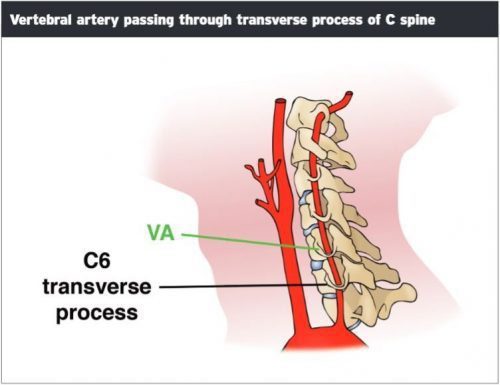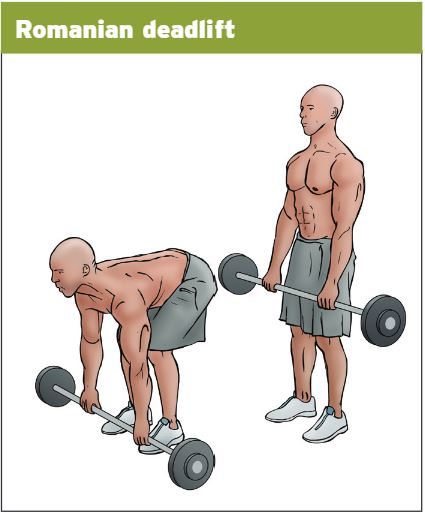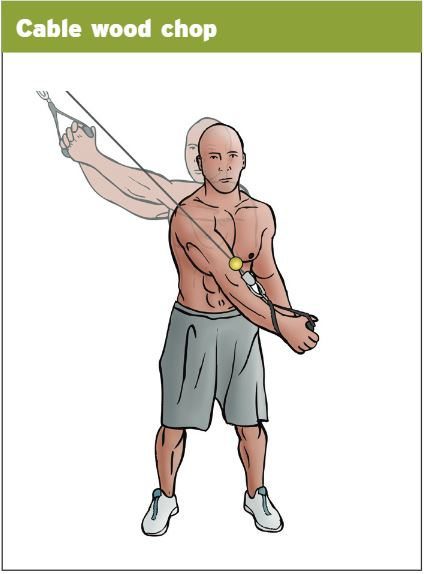Transverse process fractures are an uncommon type of sport injury reported in athletes. It commonly develops after direct contact injuries and/or due to a strong forceful contraction of the quadratus lumborum muscle when the trunk is in a position of side flexion. Dr. Alex Jimenez, doctor of chiropractic, has treated a variety of sports injuries among athletes, focusing on restoring their original health to help them return to their specific sport as soon as possible. While he’s treated many common sports injuries, some uncommon types of injuries, such as transverse process fractures, can still benefit from chiropractic treatment.
Table of Contents
Anatomy
Every vertebra of the spine is shaped with a pair of bony protrusions, wing-like in appearance, from each side, best referred to as the transverse processes, which function as an insertion point for muscles and ligaments. The transverse processes can be found along the vertebrae of the three distinct areas of the spine: the cervical vertebrae; the thoracic vertebrae; and the lumbar vertebrae. Each transverse process functions minimally different in each region of the spine.
Within the cervical spine, the transverse processes function as points of attachment for a variety of muscles surrounding the region, such as the suboccipital muscles, the scalenes and the levator scapulae as well as several ligaments which connect to these to help support the spine. The transverse processes located within the cervical spine are unique from the others in which they contain small holes to provide the passing of the vertebral arteries that extend from the subclavian artery to the brain, granting protection to this fundamental artery.
Along the thoracic spine, the unique function of the transverse process is to provide a point of attachment for the ribs through the structure known as the costotransverse joint. These articulations are essential towards the function of the ribs during breathing and movement.
In the lumbar spine, the transverse processes function as a base for the attachment of many of the trunk muscles which surround it, such as the quadratus lumborum, the middle layer of the thoracolumbar fascia, which is an indirect attachment point for the internal oblique and the transverse abdominus, the psoas major and the longissimus thoracis. Because many muscles insert onto these specific transverse process, the length and shape of these is much bigger than those found along the cervical and thoracic spine.

Small ligaments and proprioceptive muscles known as the intertransversi and the rotatores can be found between each transverse process, functioning as minor position sensors which allow the muscles to feel sensation during the movements of the spine. As a matter of fact, alterations which only occur during puberty may create abnormalities associated with the size and shape of these and fractures along these may occur in teenagers and young adults.

Mechanism of Injury
The transverse processes can become fractured through direct trauma or injury from contact sports or due to direct impact from falls off heights or from motorcycles. Automobile accidents can also cause injury to these important structures. In addition, because damage to the transverse processes usually involve high velocity forces, surrounding organs may also be affected. Also, depending on the extent of trauma, multiple transverse processes can be fractured at the same time. Furthermore, a muscle avulsion where it pulls off the transverse process can occur during a muscle contraction while in a forward bend, rotating posture or with strong lateral flexion movements, for instance, during rugby, MMA and judo. Finally, repetitive microtrauma as a result of constant and repetitive motions in certain sports and physical activities may also cause fractures, for example, as with cricket fast bowlers.
The three most common mechanisms of injury recorded with professional elite level rugby athletes included: direct impact from a knee, which causes fractures to the L2 and L3 transverse processes found in the lumbar spine, without causing other forms of injury; a strong blow to the upper chest/arm area from the side, which generally causes a player to contract their muscles, including the quadratus lumborum, resulting in an avulsion to the L3 transverse processes of the lumbar spine; and last, an individual falling heavily onto their side and landing on another player, was described to cause fractures to the L2 transverse processes of the lumbar spine as well as the 11th and 12th ribs on the same side.
Symptoms of Transverse Process Fractures
An individual who has experienced a transverse process fracture commonly describes symptoms of back pain immediately after a direct blow or a contraction. The pain may usually manifest as a severe, deep and localized type of discomfort. They may also experience radiating pain traveling down their buttocks or thigh. The symptoms may overall be debilitating or impairing, greatly restricting mobility to the point where walking and contracting of the attaching muscles may be difficult for the individual or athlete. Intense muscle spasms may also occur. Because some of the transverse processes are located very near several important organs, such as the lungs, kidneys, spleen, or liver, when injury occurs, the athlete may also experience organ-related symptoms such as shortness of breath, blood in the urine and blood pressure complications.
Research
Simple X-rays utilizing an AP view can show a transverse process fracture, but, because X-rays are often insensitive to overlying bowel gases, the view may be obstructed and detecting a fracture may be challenging. CT scans are generally the preferred modality to diagnose injury in many cases. In this instance, CT scans help visualize small fractures which may otherwise be difficult to detect on X-ray.
Treatment
The treatment options available for transverse process fractures largely depends on the amount of damage it caused initially and whether there was any damage to the surrounding organs or among other sections of the spine. If the transverse processes fracture is isolated without any other type of fracture, the injury can be effectively managed conservatively, or with non-surgical treatment options such as chiropractic, physical therapy, exercise and occasionally the use of some types of medications. Researchers determined that in 48 percent of patients with transverse process fractures, they also presented abdominal organ injury. Research studies concluded that if an external or internal force is powerful enough to break one of these structures, in 50 percent of cases, it will also cause damage to an internal organ. Therefore, transverse process fractures should be treated carefully and effectively through suspicion or organ damage involvement.
Managing the symptoms of a transverse process fracture can be achieved through a gradual conservative process. The key functional criteria to ensure the athlete is capable of returning to play include: pain free movements in and out of bed and/or a chair; pain free walking; pain free running; pain free side plank for up to 30 seconds; pain free sprinting; pain free gym movements including the involvement of strong abdominal contractions, such as deadlifts and functional unilateral exercises like kettle bell swings; pain free change of direction; and pain free contact in sport or physical activity.
As for the rehabilitation process, individuals and athletes can simultaneously work on strengthening exercises while also working on return to running and light skill training. Once the athlete experiences initial pain free movements, the rehabilitation process can proceed to an increase in weight load, change of movement direction and more difficult exercises can be implemented into the original rehab regimen. Also, massages to the quadratus lumborum and erector spinae can be useful as well as the use of heat therapy to decrease the symptoms of muscle spasm and pain relief. Anti-inflammatory medications are sometimes recommended by healthcare professionals, however, as these are often only temporary solutions to the symptoms, their use should be delayed to ensure the healing process proceeds accordingly. Painkillers are often used for sleep but are generally not recommended.
The key strength exercises that will ensure the athlete gained enough strength to be able to return to their specific sport can also be used to measure the improvement progress of the injury. These include exercises directly directly utilize the attachment muscles such as the quadratus lumborum, erector spinae and obliques. These exercises are listed and can be performed as follows: the side plank, built slowly from short 10-second holds to longer 45-second and above holds;

the Romanian deadlifts, can be initiated using a bar while progressively adding weight. Approximately half the individual’s bodyweight for 10 repetitions is a standard benchmark;

and finally, cable wood chops, the athlete should perform 10 full pain free repetitions with a full range of movement. Due to the variety of pulley systems, choosing a target weight to perform this specific exercise can be difficult.

Ultimately, it’s important for an athlete to seek immediate medical attention if they experience any of the previously mentioned symptoms and if the presence of a transverse process fracture is suspected. Various qualified healthcare professionals, such as chiropractors and physical therapists, are specially trained to diagnose and treat similar injuries. A chiropractor may use an array of massage and mobilization therapies to help strengthen the surrounding muscles as well as improve the individual’s original mobility and flexibility. Through a chiropractic adjustments, chiropractors may also carefully realign a subluxated spine to further improve the individual’s symptoms, helping to decrease the amount of stress or pressure being applied against the spine. Furthermore, a chiropractor can recommend additional exercises from the ones mentioned above, accordingly set up for each individual’s injury. Before attempting any of the previously mentioned exercises, be sure to consult a medical professional to avoid further injury and speed up the rehabilitation process.
At our offices, we utilize progressive therapies and functional rehabilitation procedures, focusing primarily on restoring the individual’s original function after they’ve suffered an injury or condition. We take a global physiological treatment approach in order to regain total functional health. Our qualified and experienced staff have worked with many patients, providing them with the best service to accommodate the individual throughout their treatment process. Dr. Alex Jimenez has helped patients recover for over 25 years, using chiropractic care and treatments.
Transverse Process Fracture Overview
Sourced through Scoop.it from: www.elpasobackclinic.com
It’s important for an athlete to seek immediate medical attention if they experience any symptoms and if the presence of a transverse process fracture is suspected. Various qualified healthcare professionals, such as chiropractors and physical therapists, are specially trained to diagnose and treat similar injuries. A chiropractor may help strengthen as well as improve the individual’s original mobility and flexibility.

For more information, please feel free to ask Dr. Jimenez or contact us at 915-850-0900 .
By Dr. Alex Jimenez

TRENDING TOPIC: EXTRA EXTRA: New PUSH 24/7®? Fitness Center
Post Disclaimer
Professional Scope of Practice *
The information on this blog site is not intended to replace a one-on-one relationship with a qualified healthcare professional or licensed physician and is not medical advice. We encourage you to make healthcare decisions based on your research and partnership with a qualified healthcare professional.
Blog Information & Scope Discussions
Welcome to El Paso's Premier Wellness and Injury Care Clinic & Wellness Blog, where Dr. Alex Jimenez, DC, FNP-C, a board-certified Family Practice Nurse Practitioner (FNP-BC) and Chiropractor (DC), presents insights on how our team is dedicated to holistic healing and personalized care. Our practice aligns with evidence-based treatment protocols inspired by integrative medicine principles, similar to those found on this site and our family practice-based chiromed.com site, focusing on restoring health naturally for patients of all ages.
Our areas of chiropractic practice include Wellness & Nutrition, Chronic Pain, Personal Injury, Auto Accident Care, Work Injuries, Back Injury, Low Back Pain, Neck Pain, Migraine Headaches, Sports Injuries, Severe Sciatica, Scoliosis, Complex Herniated Discs, Fibromyalgia, Chronic Pain, Complex Injuries, Stress Management, Functional Medicine Treatments, and in-scope care protocols.
Our information scope is limited to chiropractic, musculoskeletal, physical medicine, wellness, contributing etiological viscerosomatic disturbances within clinical presentations, associated somato-visceral reflex clinical dynamics, subluxation complexes, sensitive health issues, and functional medicine articles, topics, and discussions.
We provide and present clinical collaboration with specialists from various disciplines. Each specialist is governed by their professional scope of practice and their jurisdiction of licensure. We use functional health & wellness protocols to treat and support care for the injuries or disorders of the musculoskeletal system.
Our videos, posts, topics, subjects, and insights cover clinical matters and issues that relate to and directly or indirectly support our clinical scope of practice.*
Our office has made a reasonable effort to provide supportive citations and has identified relevant research studies that support our posts. We provide copies of supporting research studies available to regulatory boards and the public upon request.
We understand that we cover matters that require an additional explanation of how they may assist in a particular care plan or treatment protocol; therefore, to discuss the subject matter above further, please feel free to ask Dr. Alex Jimenez, DC, APRN, FNP-BC, or contact us at 915-850-0900.
We are here to help you and your family.
Blessings
Dr. Alex Jimenez DC, MSACP, APRN, FNP-BC*, CCST, IFMCP, CFMP, ATN
email: coach@elpasofunctionalmedicine.com
Licensed as a Doctor of Chiropractic (DC) in Texas & New Mexico*
Texas DC License # TX5807
New Mexico DC License # NM-DC2182
Licensed as a Registered Nurse (RN*) in Texas & Multistate
Texas RN License # 1191402
ANCC FNP-BC: Board Certified Nurse Practitioner*
Compact Status: Multi-State License: Authorized to Practice in 40 States*
Graduate with Honors: ICHS: MSN-FNP (Family Nurse Practitioner Program)
Degree Granted. Master's in Family Practice MSN Diploma (Cum Laude)
Dr. Alex Jimenez, DC, APRN, FNP-BC*, CFMP, IFMCP, ATN, CCST
My Digital Business Card


